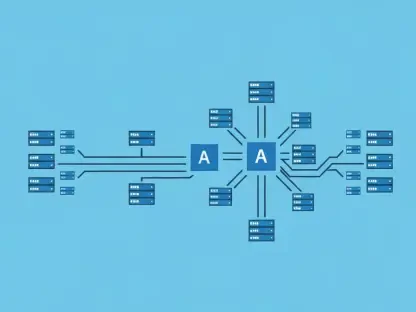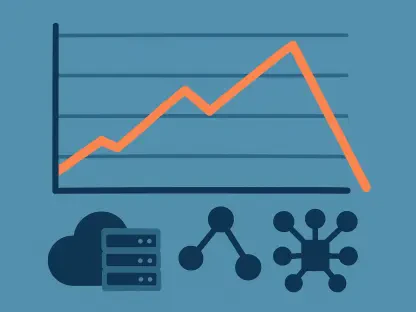I’m thrilled to sit down with Vijay Raina, a renowned expert in enterprise SaaS technology and software architecture. With his deep knowledge of tools that empower teams and streamline workflows, Vijay offers invaluable insights into the latest advancements in knowledge management platforms. Today, we’ll dive into the recent Stack Overflow for Teams 2025.6 release, exploring its focus on back-end stability and identity management, as well as exciting upcoming features like nested comments, content ingestion engines, and AI workflow integrations. Let’s uncover how these innovations are shaping the future of team collaboration and knowledge sharing.
How does the Stack Overflow for Teams 2025.6 release strengthen the platform’s foundation for enterprise users?
The 2025.6 release is all about solidifying the core infrastructure. We prioritized back-end improvements to enhance stability and data integrity, which are crucial for enterprise environments where reliability is non-negotiable. These updates ensure the platform can handle high volumes of activity without hiccups, setting a strong base for rolling out more user-facing features down the line. It’s like reinforcing the foundation of a house before adding new rooms—you don’t see the work, but it’s what keeps everything standing.
Can you explain the enhancements to SAML and SCIM integrations in this update and their impact on onboarding?
Absolutely. SAML and SCIM are protocols for managing user identities across systems. With this release, we’ve expanded support for more user attributes, like first and last names, which makes onboarding much smoother. Instead of manually entering data, these integrations pull information directly from enterprise identity systems, reducing errors and saving time. For large organizations, this alignment means less friction when integrating our platform with their existing tools, ensuring a seamless experience for both admins and end users.
What’s behind the focus on data accuracy, particularly with the email address syncing feature?
Data accuracy is critical, especially for enterprises that rely on reporting and historical data. The email address syncing feature automatically updates changes across all database fields for customers who use data exports. This eliminates discrepancies that could skew reports or analytics. For instance, if a user updates their email, the system ensures that change reflects everywhere, maintaining consistency. This kind of reliability is a game-changer for teams who need trustworthy data to make informed decisions.
Why was the terminology updated from ‘API Service Keys’ to ‘API Service Application,’ and how does this help users?
This change might seem small, but it’s about clarity. ‘API Service Keys’ could be ambiguous, suggesting just a credential, whereas ‘API Service Application’ better reflects the broader concept of a managed integration point. For admins and developers, this updated term makes it easier to understand what they’re configuring or troubleshooting in the UI and documentation. It’s a subtle shift, but it reduces confusion and aligns the language with how these integrations function in practice.
Looking ahead, can you tell us more about the upcoming nested comments feature and how it will transform discussions?
Nested comments on answers are going to elevate how conversations happen on the platform. Users will be able to reply directly to specific comments, creating threaded discussions that are easier to follow. This adds context and clarity, especially in complex solution threads where multiple ideas are being tossed around. We’re also refreshing the UI to improve visibility of upvotes and replies, so active conversations stand out. It’s about making dialogue more structured and engaging for everyone involved.
How will the new ingestion engine help teams turn scattered content into reusable knowledge?
The ingestion engine is exciting because it tackles the problem of knowledge silos. It’s designed to pull content from platforms like SharePoint or Slack and convert it into structured, reusable knowledge within Teams. Think documents, chat threads, or shared files—anything that holds institutional know-how. Features like trust indicators help prioritize relevant content, while human-in-the-loop workflows ensure quality through editing and verification. It’s a powerful way to capture expertise that might otherwise get lost in disparate systems.
Can you elaborate on the Model Context Protocol server and its role in blending AI with team workflows?
The Model Context Protocol, or MCP server, is about integrating verified knowledge into AI-driven workflows. It provides structured read/write access, so users can pull trusted content directly into tools like IDEs or coding copilots without leaving their environment. Imagine getting draft suggestions or routing questions to subject matter experts seamlessly. We’ve also built in robust governance and audit trails to ensure security and accountability. It’s a scalable way to keep knowledge fresh and accessible, especially in fast-paced development settings.
With so many features on the roadmap, how do you decide what to prioritize for future development?
Prioritization is a balancing act. We look at user feedback, enterprise needs, and technical feasibility to decide what comes next. Our team actively gathers input through surveys, customer success interactions, and usage data to understand pain points and opportunities. We also assess how a feature aligns with our long-term vision of making knowledge sharing effortless. It’s a collaborative process—users play a huge role in shaping the roadmap, even if release dates aren’t set in stone yet.
What’s your forecast for the evolution of knowledge management platforms in the coming years?
I see knowledge management platforms becoming even more integrated with everyday workflows, especially through AI and automation. The future is about breaking down barriers—whether it’s silos between tools or gaps in expertise. Platforms like ours will likely evolve to anticipate user needs, proactively surfacing insights or connecting people to answers before they even ask. With advancements in content ingestion and AI governance, I expect these tools to become indispensable for organizations aiming to stay agile and competitive in a rapidly changing landscape.









